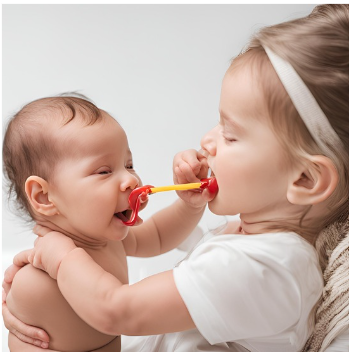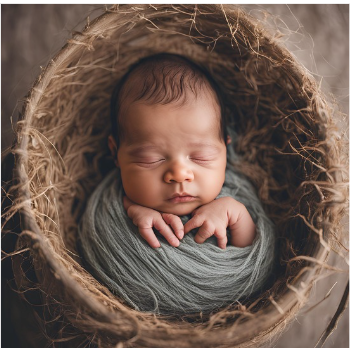
Engaging Activities for Your Newborn: Learning Through Play
Engaging Activities for Newborns: Learning Through Play
Welcoming a newborn into your life is a magical and exciting time. As a pregnant woman, you may be wondering how to bond with your little one and help them learn and grow in their first few months. The good news is that newborns are like little sponges, soaking up the world around them, and the best way to encourage their development is through play. Playing with your baby doesn’t just help them learn – it also creates a special connection between the two of you.
In this article, we’ll explore fun and simple activities that you can do with your newborn to promote learning, sensory exploration, and bonding. These activities are designed for newborns from birth to around 3 months old. They’re easy to do at home and don’t require fancy toys or expensive gadgets – just a little creativity and lots of love.
Why Play Is Important for Newborns
Newborns are constantly learning about the world. Although they might not seem very active, their brains are working hard to make sense of sights, sounds, smells, and touch. Engaging in playful activities helps:
- Boost brain development: Simple games stimulate a baby’s brain, helping it grow and make connections.
- Encourage motor skills: Activities that involve reaching, kicking, or moving help strengthen muscles and develop coordination.
- Build emotional bonds: Playtime is a wonderful way to build trust and attachment between you and your baby.
- Foster language development: Talking, singing, and cooing during play helps your baby start to recognize sounds and patterns in language.
Now that you know how important play is, let’s dive into some fun and easy activities.
1. Face-to-Face Fun
Newborns are fascinated by faces, especially yours. Here’s a simple way to play:
- How to Play: Lay your baby on their back and position yourself so they can see your face clearly. Smile, make silly faces, and stick out your tongue. Watch how they respond! You might notice them trying to imitate your expressions.
- Why It’s Great: This activity helps your baby learn about emotions and communication while strengthening your bond.
2. Tummy Time Adventures
Tummy time is essential for developing your baby’s neck and shoulder muscles.
- How to Play: Place your baby on their tummy on a soft, safe surface. Lie down in front of them and talk, sing, or dangle a colorful toy within their line of sight. You can also use a tummy time mat or a rolled-up towel under their chest for support.
- Why It’s Great: Tummy time helps prevent flat spots on the head, strengthens muscles, and prepares your baby for crawling.
3. Sensory Exploration
Babies learn through their senses, so introducing different textures, sounds, and sights is a fantastic way to play.
- How to Play: Gather soft fabrics, a crinkly toy, or a baby-safe mirror. Let your baby touch the items while you describe how they feel (“This is soft,” or “This makes a crinkly sound”). Show them their reflection in the mirror and talk to them.
- Why It’s Great: Sensory play helps your baby’s brain make connections and learn about the world.
4. Sing and Dance
Your baby loves the sound of your voice, and adding movement makes it even more fun.
- How to Play: Sing lullabies or nursery rhymes while gently swaying or bouncing your baby. You can also clap their hands together to the rhythm or move their legs like they’re pedaling a bike.
- Why It’s Great: Singing introduces your baby to language and rhythm, while the movement helps them develop body awareness.
5. High-Contrast Magic
Newborns can only see high-contrast colors, like black and white, in the early weeks.
- How to Play: Show your baby high-contrast cards or books with bold patterns. Hold them about 8-12 inches away from their face and let them focus. You can also create your own patterns using a marker and white paper.
- Why It’s Great: High-contrast visuals stimulate your baby’s developing eyesight and help improve focus.
6. Peekaboo Games
Peekaboo never goes out of style, even for newborns.
- How to Play: Hold a lightweight scarf or blanket in front of your face, then pull it away while saying, “Peekaboo!”. You can also use your hands to cover and uncover your face.
- Why It’s Great: Peekaboo helps your baby start to understand object permanence – the idea that things still exist even when they can’t be seen.
7. Baby Massage
Touch is one of the most powerful ways to connect with your baby.
- How to Play: After bath time or during a calm moment, use baby-safe lotion or oil to give your baby a gentle massage. Talk softly or hum as you rub their legs, arms, back, and tummy.
- Why It’s Great: Massage soothes your baby, promotes relaxation, and improves circulation and digestion.
8. Story Time
It’s never too early to start reading to your baby.
- How to Play: Choose books with simple pictures and bright colors. Read slowly and use different voices for characters. Even if your baby doesn’t understand the story, they’ll enjoy hearing your voice and looking at the pictures.
- Why It’s Great: Reading helps your baby develop listening skills and introduces them to the rhythm of language.
9. Talk, Talk, Talk
Talking to your baby throughout the day is one of the easiest ways to encourage learning.
- How to Play: Narrate what you’re doing (“Now I’m making your bottle,” or “Let’s put on your cute socks”). Respond to their coos and babbles as if you’re having a conversation.
- Why It’s Great: Talking helps your baby learn language and builds a foundation for communication.
10. Follow the Light
Newborns are naturally drawn to light.
- How to Play: Use a flashlight or a small, safe light-up toy to create gentle movements on the wall or ceiling. Let your baby watch the light move.
- Why It’s Great: This activity stimulates your baby’s vision and encourages them to track objects with their eyes.
Tips for Playtime
- Keep it short: Newborns can only handle a few minutes of play at a time. Watch for signs that they’re tired or overstimulated.
- Follow their lead: Every baby is different. Pay attention to what your baby seems to enjoy and adjust activities accordingly.
- Make it part of your routine: Play doesn’t have to be a big event. Incorporate it into everyday moments, like during diaper changes or before naps.
- Don’t stress: There’s no right or wrong way to play with your baby. The most important thing is that you’re spending time together and having fun.
The Joy of Play
Playing with your newborn is about more than just learning – it’s about creating memories, sharing love, and building a strong foundation for your baby’s future. These simple activities are designed to bring joy to both you and your little one as you navigate the early days of parenthood.
So, get ready to make funny faces, sing your heart out, and watch your baby’s eyes light up as they discover the world through play. After all, the best part of playtime is the laughter and love you’ll share along the way.



